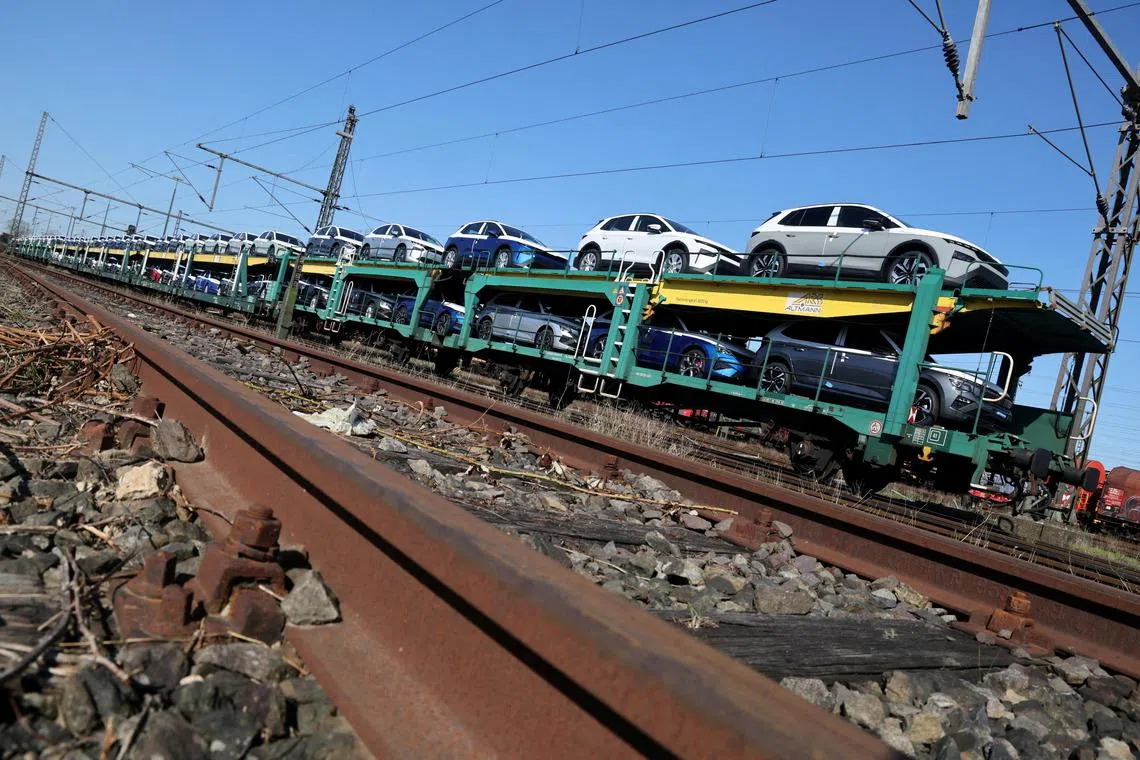German exports up in February ahead of tariffs as industrial production falls
Sign up now: Get ST's newsletters delivered to your inbox

Most German exports went to the United States, up 8.5 per cent compared with January, as demand increased in anticipation of the tariffs.
PHOTO: REUTERS
Follow topic:
GDANSK/BERLIN – German exports rose more than expected in February as US demand increased in anticipation of tariffs by the Trump administration, but industrial production fell, showing the struggles of manufacturing in Europe’s biggest economy.
Exports rose by 1.8 per cent in February compared with the previous month, data from the federal statistics office showed on April 7.
The result compared with a forecast 1.5 per cent increase in a Reuters poll.
Imports rose by 0.7 per cent on a calendar and seasonally adjusted basis compared with January.
Most German exports went to the United States, up 8.5 per cent compared with January, as demand increased in anticipation of the tariffs.
The far-reaching tariffs announced by the US
“Even if we don’t know whether the announced tariffs will be passed through entirely by companies or how US demand will react per product on higher prices, it is clear that an export-oriented economy like Germany’s will suffer from a trade war,” said Mr Carsten Brzeski, global head of macro at ING.
The German trade balance showed a surplus of €17.7 billion in February, up from €16.2 billion in January, but below the €22.6 billion surplus recorded in February of 2024.
Exports to European Union countries rose by 0.5 per cent on the month, while exports to third countries rose by 3.2 per cent.
Weak industry
German industrial production fell more than expected in February by 1.3 per cent compared with the previous month, the federal statistics office said on April 7.
Analysts polled by Reuters had predicted a 0.8 per cent decline.
“Hopes of an upturn in industry are giving way to disillusionment,” said Hamburg Commercial Bank chief economist Cyrus de la Rubia.
With the US tariffs announced, there is little prospect of an early recovery in this sector, especially as competitive pressure from countries that also face higher barriers to the US market will increase, Dr de la Rubia said.
Compared with February 2024, production was 4 per cent lower after adjustment for calendar effects. German industrial production remains about 10 per cent below its pre-pandemic levels, some five years after the onset of Covid-19.
German industrial orders stagnated in February, data showed on April 4, showing that demand remains weak.
Higher defence and infrastructure spending are still months away, so it looks likely that German industrial production will contract again in the coming months, said Capital Economics senior Europe economist Franziska Palmas.
“All of this means that after the fiscal U-turn optimism, the nearer-term outlook for the German economy has worsened once again,” Ms Brzeski said. REUTERS

